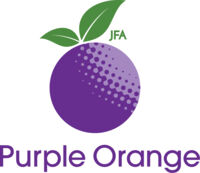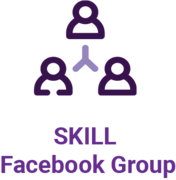Please login or register for an account to get started on building your SKILLs!
Exploring Your Resources
Key Learnings
- You can use a variety of people and services to help you reach your goals
- NDIS funding can be used to achieve your goals

Now that you have started developing your vision and some goals for your plan, the next step is to understand what resources can help you reach your goals. You don’t have to do this alone, it is important to have a team of different people in different roles to help you.
In this section, we will explore the different types of support, such as paid supports, funding sources and peer support. We will also learn about the role of NDIS funding, and how to manage funds in order to live your best life.
Getting Resourceful For Your Vision, Plan and Goals
Once you have set some goals, it's time to get to work.

Using the STEPS shown above, you can use your plan to continue to move toward your GOALS. It's important to remember you have the power to change things!
Let’s now think about how you might identify the resources that will help you achieve your vision, plan and goals. There are many different people with different roles who can assist you with this. Below are some examples of people, factors and services that could improve your chance of success.

Unpaid allies - Family members, friends and community members. These are informal and unpaid relationships you already have with people in your life.
Paid supports - Support agencies and organisations, support workers, support coordinators, therapists, etc.
Mainstream services in the community – Services and supports that everyone has access to like; Medicare, Centrelink, schools, TAFE and universities, businesses and shops, council services and programs, and public transport.
Cultural identity and background - may have a very important role in your identity and your vision.
Various funding sources – the NDIS, eligibility for other State and Federal Government programs, possible compensation and insurance claims.
Peer support networks – people you connect with who have similar experiences to you. Peer networks can provide great benefits and support for people living with disability.
Unpaid gaps - additional help and support that will need to be paid for. This includes NDIS funded services and programs. (If you have any, note them down below so you can think about how to address these later.)
My Supports and Services
When filling out the questions below think about:
- Where and who do you currently get support from in your life?
- Are there things you want to change and do differently?
- How often do you use and need these supports?
Resources to Vision
Hopefully the above has given you a list of resources and elements that you can use when thinking about and developing your vision and goals.
Vision to Actions to Plan
Your next step is taking ACTION - by taking your VISION and turning it into GOALS via your NDIS Plan.

Your NDIS Plan should be about:
- making the most of what is available to you
- finding out what COULD be available to you
- Learning HOW to best use your PLAN - or in other words, how can you design it and use it to access ALL the things in you need.
Funding
The NDIS is the most common form of funding available to people living with disability in Australia. It enables you to access a range of different resources and supports to do the things that you want to do every day. BUT…. for people living with disability, funding alone does not result in you living your best life. It’s not about the money, but how you spend it that counts!
Remember in our previous workshop - Build your Vision, when we spoke about a good life and valued roles? It is important when we plan for the NDIS, to first step back and think about how to plan for a good life and access all the opportunities that brings.
Having a clear vision is key to achieving a good life as it provides a path to your future. It's important that your allies and supports have the same focus so you can achieve your dream life. When NDIS-funded supports are self-directed, with the aim of achieving a good life and participants moving into valued roles, it can truly transform the lives of everyone involved.
The NDIS is currently changing and they are updating their processes and resources.
Access this page on the NDIS website for current information that outlines the different steps that people will experience when applying for the NDIS and once they have joined the NDIS.
Access this page on the NDIS website for current factsheets and information booklets about the NDIS.
Click the next button below when you are ready to move on...


